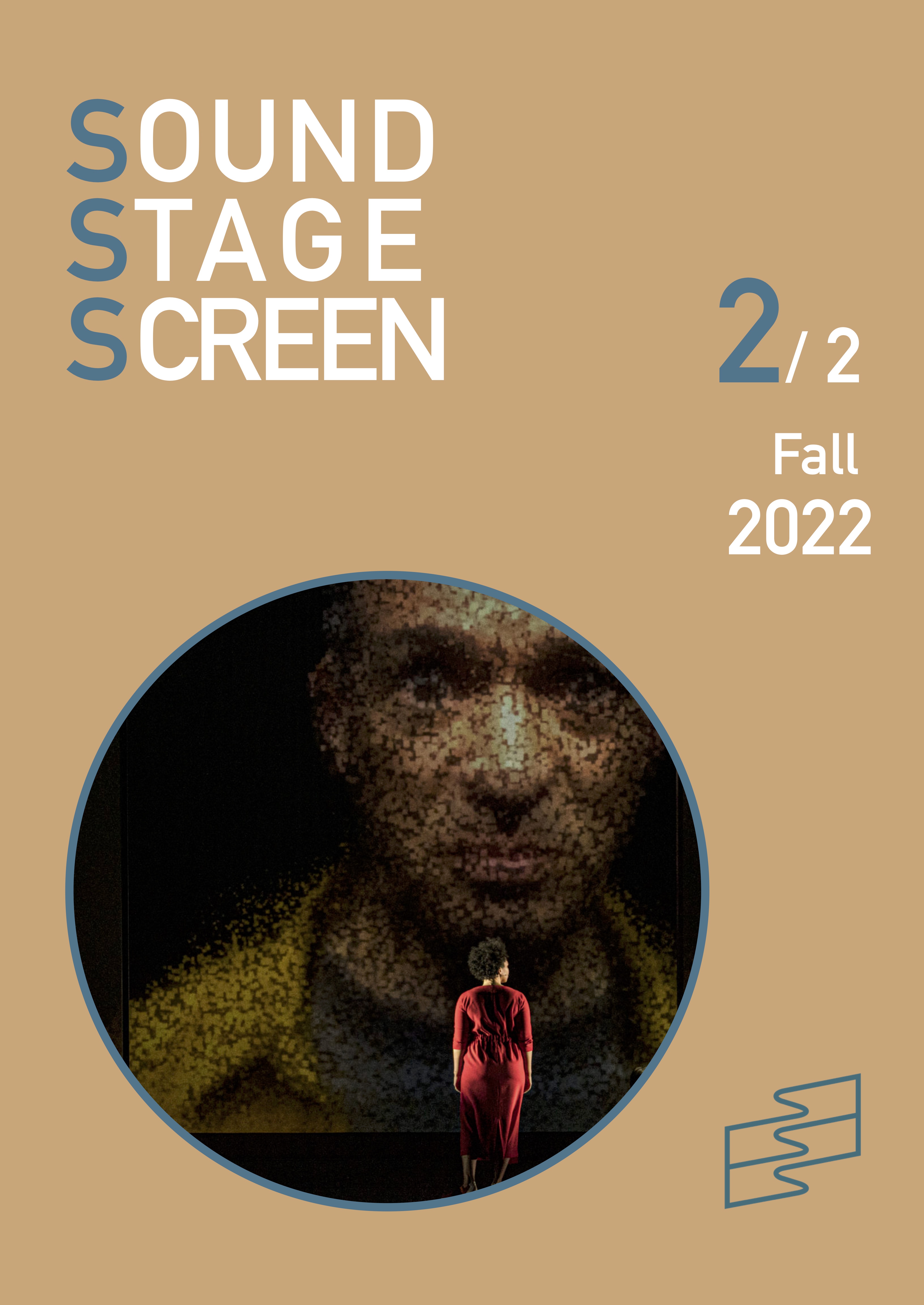Abstract
This article analyzes several novels and short stories by Jules Verne devoted to opera, audio technologies, and audience practices. This portion of Verne’s output is particularly thought-provoking for the cultural history of recording technologies, technologically-influenced listening practices, audience behavior, and music fandom. As often in Verne, the exploration of art worlds is connected with the exploration of technological inventions, such as recording and broadcast technologies. This article focuses in particular on L’Île à hélice (1895) and Le Château des Carpathes (1892). These novels are linked to their wider cultural, social, and technological contexts as well as to recent theoretical frameworks developed in the field of opera studies, sound studies, media studies, fan studies, the cultural history of technology, and Verne studies. The aim of the article is to shed light on the genesis of the relation between operatic audiences and audio technologies through a survey of Jules Verne’s visionary and imaginative narratives.
References
Auslander, Philip. Liveness: Performance in a Mediatized Culture. 2nd ed. New York: Routledge, 2008.
Benjamin, Walter. “The Work of Art in the Age of Mechanical Reproduction.” In Walter Benjamin, Illuminations, edited by Hannah Arendt, translated by Harry Zohn, 217–51. New York: Schocken Books, 1968.
Benzecry, Claudio. The Opera Fanatic: Ethnography of an Obsession. Chicago: University of Chicago Press, 2011.
Cavicchi, Daniel. “Fandom Before ‘Fan’: Shaping the History of Enthusiastic Audiences.” Reception: Texts, Readers, Audiences, History 6, no. 1 (2014): 52–72.
Cavicchi, Daniel. Listening and Longing: Music Lovers in the Age of Barnum. Middletown: Wesleyan University Press, 2011.
Coleman, Jeremy. Richard Wagner in Paris: Translation, Identity, Modernity. Woodbridge: The Boydell Press, 2019.
Compère, Daniel. “Jules Verne and the Limitations of Literature.” In Jules Verne: Narratives of Modernity, edited by Edmund J. Smyth, 40–45. Liverpool: Liverpool University Press, 2000.
Goodman, David. “Distracted Listening: On Not Making Sound Choices in the 1930s.” In Sound in the Age of Mechanical Reproduction, edited by David Suisman and Susan Strasser, 15–46. Philadelphia: University of Pennsylvania Press, 2010.
Hennion, Antoine. The Passion for Music: A Sociology of Mediation, translated by Margaret Rigaud and Peter Collier. New York: Routledge, 2016.
Henson, Karen. “Introduction: Of Modern Operatic Mythologies and Technologies.” In Technology and the Diva: Sopranos, Opera, and Media from Romanticism to the Digital Age, edited by Karen Henson, 11–23. Cambridge: Cambridge University Press, 2016.
Hogle, Jerrold E. “Introduction: The Gothic in Western Culture.” In The Cambridge Companion to Gothic Fiction, edited by Jerrold E. Hogle, 1–20. Cambridge: Cambridge University Press, 2002.
Jenkins, Henry. Textual Poachers: Television Fans and Participatory Culture. New York: Routledge, 1992.
“Jules Verne et la musique.” Special issue, Revue Jules Verne, no. 24 (2007).
Kane, Brian. Sound Unseen: Acousmatic Sound in Theory and Practice. New York: Oxford University Press, 2014.
Newark, Cormac. Opera in the Novel from Balzac to Proust. Cambridge: Cambridge University Press, 2011.
Nigro Giunta, Violeta, and Nicolò Palazzetti. “‘New Avenues for Listening.’ Sensory Culture in the Digital Age and the Persistence of Utopia. An Interview with Michael Bull.” Transposition 6 (2016).
Platten, David. “A Hitchhiker’s Guide to Paris: Paris au XXe siècle.” In Jules Verne: Narratives of Modernity, edited by Edmund J. Smyth, 78–93. Liverpool: Liverpool University Press, 2000.
Reibel, Emmanuel. “Fantasmagories de l’écoute: autour des urnes de l’Opéra (1907–2007).” In Écoute multiple. Écoute des multiples, edited by Pierre Fargeton and Béatrice Ramaut-Chevassus, 71–89. Paris: Hermann, 2019.
Roques, Sylvie. Jules Verne et l’invention d’un théâtre-monde. Paris: Classiques Garnier, 2018.
Sala, Emilio, “The ‘Ghost Melody’ as Acousmatic Voice. Music and Effect from Melodrama to Cinema,” TRANS. Revista Transcultural de Música/Transcultural Music Review 18 (2014). https://www.sibetrans.com/trans/article/473/the-ghost-melody-as-acousmatic-voice-music-and-effect-from-melodrama-to-cinema.
Sangiovanni, Andrea. Le parole e le figure. Storia dei media in Italia dall’età liberale alla seconda guerra mondiale. Rome: Donzelli, 2013.
Schaeffer, Pierre. Treatise on Musical Objects: An Essay across Disciplines. Translated by Christine North and John Dack. Oakland: University of California Press, 2017.
Senelick, Laurence. “Outer Space, Inner Rhythms: The Concurrences of Jules Verne and Jacques Offenbach.” Nineteenth-Century Theatre & Film 30, no. 1 (2003): 1–10.
Serres, Michel. “Le savoir, la guerre et le sacrifice.” Critique 33, no. 367 (1977): 1067–77.
Shah, Raj. “Counterfeit Castles: The Age of Mechanical Reproduction in Bram Stoker’s Dracula and Jules Verne’s Le Château des Carpathes.” Texas Studies in Literature and Language 56, no. 4 (2014): 428–71.
Sherard, Robert Harborough. “Jules Verne at Home: His Own Account of His Life and Work.” McClure’s Magazine 2, no. 2 (1894): 115–24.
Simon, Yannick. “Les trois concerts Wagner au Théâtre-Italien en 1860.” Dezède online. Posted on January 21, 2018. https://dezede.org/dossiers/id/263/.
Smyth, Edmund J. “Verne, SF and Modernity: An Introduction.” In Jules Verne: Narratives of Modernity, edited by Edmund J. Smyth, 1–10. Liverpool: Liverpool University Press, 2000.
Sousa, John Philip. “The Menace of Mechanical Music.” Appleton’s Magazine 8, no. 3 (September 1906): 278–84.
Sterne, Jonathan. The Audible Past: Cultural Origins of Sound Reproduction. Durham, NC: Duke University Press, 2003.
Tarrieu, Alexandre. “Voyage au centre du théâtre.” Revue Jules Verne, no. 11 (2001): 11–24.
Unwin, Timothy. Jules Verne: Journeys in Writing. Liverpool: Liverpool University Press, 2005.
Verne, Jules. Dr. Ox’s Experiment, and Other Stories. Boston: J.R. Osgood, 1875.
Verne, Jules. The Self-Propelled Island. Translated by Marie-Thérèse Noiset. Lincoln: University of Nebraska Press, 2015. Originally published as L’Île à hélice. Paris: Hetzel, 1895.
Verne, Jules. La Jangada. 800 lieues sur l’Amazone. Paris: Hetzel, 1881.
Verne, Jules. The Castle of the Carpathians. Anonymous translator. Akron, Ohio: Saalfield, 1900. Originally published as Le Château des Carpathes. Paris: Hetzel, 1892.
Verne, Jules. “Mr. Ray Sharp and Miss Me Flat.” In Jules Verne, Yesterday and Tomorrow, translated by I. O. Evans, 125–53. London: Arco, 1905. Originally published as “M. Re-Dièze et Mlle Mi-Bémol.” In Jules Verne, Hier et demain: contes et nouvelles, 63–111. Paris: Hetzel, 1910.

This work is licensed under a Creative Commons Attribution-ShareAlike 4.0 International License.
Copyright (c) 2022 Nicolò Palazzetti

